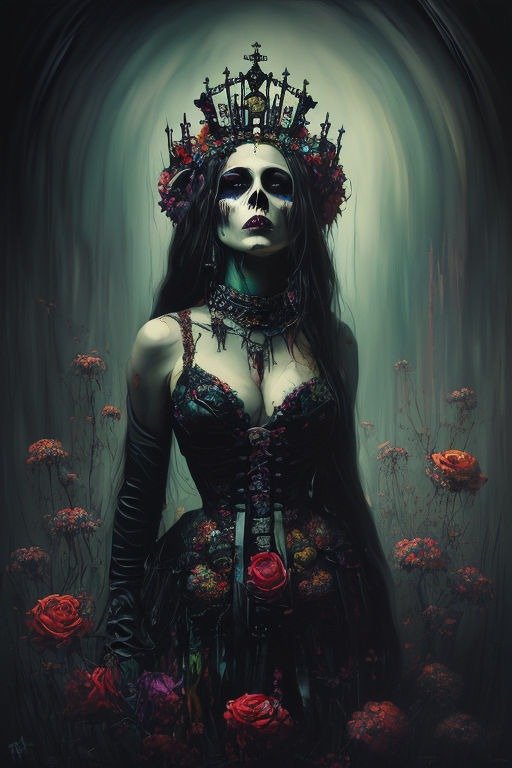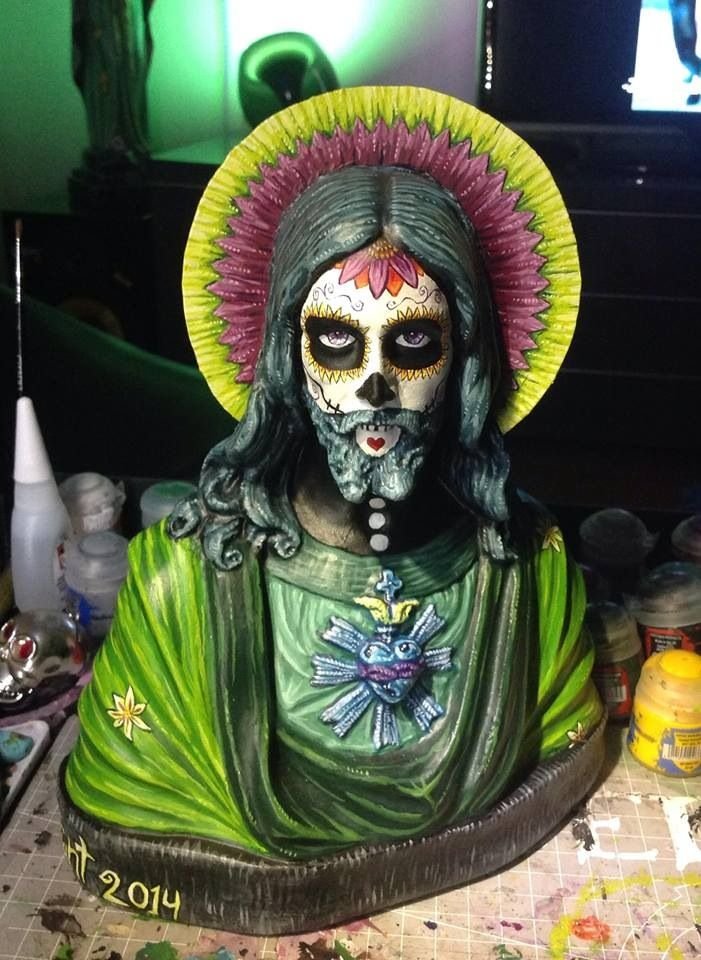Why Day of the Dead?
As the big night fast approaches, we’d like to briefly share why we chose the theme of Day of the Dead for our next event.
At Fox&Badge we choose themes for their seasonal poignancy and spiritual power, and their capacity to enable us to explore our inner archetypes. We explore cultures and stories to explore ourselves.
We’re deeply influenced by the Pagan Wheel, and the passage of the seasons through nature, and seek to revive ancient and lost traditions of marking time, and finding meaning in the way we pass through it. Most of us live in homes of perpetual summer (with summer temperatures and the eternal sunlight of electricity); many of us travel to experience other summers during our winter. Yet our bodies are seasonal and cyclical (oscillating annually, menstrually, daily). We celebrate this.
In this time around Halloween, as harvests end, winter beckons and the days darken, it’s become a tradition for us to explore various manifestations of that darkness and shadow, and the spirit of Samhain (1st November). Pagans believe that this is the precious time when the boundary between our world and the next thins, enabling contact with worlds beyond. Offerings are made to the spirits of the aos sí, great fires are lit, and solemnity mixes with celebration.
The Western Church eventually absorbed Samhain to create the 3 days of Allhallowtide:
- 31st October: All Saint’s Eve (Hallowe’en)
- 1st November: All Saints' Day
- 2nd November: All Souls' Day - also called The Commemoration of All the Faithful Departed; a chance to broaden commemoration from the elite of saints to the everyday of all those we all have lost.
Theories suggest that Mexico continued this tradition of innovation and transformation, fusing these Christian commemorations with its older Aztec and indigenous traditions of ancestor worship to create a new, unique, semi-Catholic multi-day feast: Dia de los Muertos. And then a British production company changed the traditions once more, creating the first ever DdlM parade in Mexico City, for the James Bond film “Spectre” - a parade that has also now become tradition.
In this way, there is a seamless spiritual thread that binds our ancient national rites of this land to other rituals far beyond. We believe that Dia de los Muertos continues that long, fertile and unifying tradition of syncretism, practised by all great cultures, deploying combination and reverence, and that the respectful fluidity of ideas and ways of worship is not only a fundamental freedom, but a crucial way in which cultures can meet and harmonise, culture can grow, and so can we.
Whatever our differences, we all seek the same simple thing: to revere, and to celebrate.
In the west, many of us seem to have forgotten the beauty of death. We avoid talking about it; fear it; resist the pain it brings. Yet we must all face it, and face our grief. Grief is the flip-side of love. We cannot love without grieving its loss. In helping us grieve more joyfully, the festive traditions of Dia de los Muertos help us love more deeply.
For the first time at F&B, we will be holding real space for grief, and enrolling experts and empaths to be loving custodians. Deep emotion is welcome, as is its release. Shrines dotted throughout the venue will offer thoughtful contemplative counterpoint to our more energetic dance-floors - themselves great hymns and shrines to sound and life.
We may be gathering in a club rather than church, but what we hope attracts and binds this community is our collective belief that these spaces can also be sacred ones - of dance, connection, and catharsis. Spaces where together we embrace life in its fullness.
We fully acknowledge the enormous cultural gift generated by Mexico and so many other countries and cultures that enables us to face and overcome our greatest collective challenge, death, and celebrate our greatest gift - LIFE.




